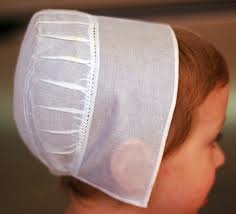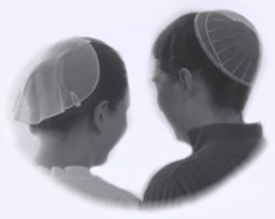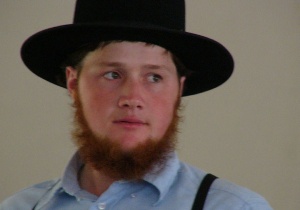The safety pins came and went quicker than the ice bucket challenge, and were laughed off the internet stage with vitriol usually reserved for, well… Donald Trump. On Sunday morning, I saw several safety pins at church. On Sunday afternoon, my newsfeed was filled with enthusiastic condemnation of the same.
Most of my queer, trans, nonwhite friends have been vocal and insultingly bitter about safety pins. They’ve also been witty and angry. I know their response was too aggressive for the mainstream moderate (at times, abrasive to me), but I can’t help but admire them. They’re my friends, after all, I feel where their pain comes from. I admire their focused anger, all their anger, how can I fault anyone for their anger at the triumph of sociopathy, racism, et. al, you know the list by now? Let us have our anger, in social networks and in the streets, in safe and democratic and uncomfortable ways. Perhaps the source of their anger, in part, is years of being told to “be less angry” by the same people who voted for Trump.
The mainstream moderate, the armchair activist, the good-intending white suburbanite, has taken a beating in the discourse of 2016’s activism. That’s true. My best–if unsympathetic–response is: those rhetorical beatings are teachable (learnable) moments. Be resilient enough to absorb critique. Take it personally, but know it’s not personal. It’s systemic, and untangling yourself from the system is going to hurt. Take it resiliently. My friends’ anger is directed at the emptiness of the gesture–yes, you’ll wear a safety pin to church, but you’ll still drive from the suburbs into Chicago because you’re afraid to risk the diversity and inconvenience of the train. What my friends are saying, under their anger, is, “My body is at risk–and you think a safety pin is the same as a yellow star?”
As I understand it, the purpose of the safety pin is to mark yourself as safe space. But it’s odd to watch Anabaptist friends and acquaintances reach for their safety pins when we have such a long and rich history of other ways to mark ourselves. It’s only the past two generations who grew up matching the department store models. Dresses, beards, plain colors, buttons even after zippers had come into style–Mennonites have a rich legacy of choosing difference. A safety pin pails in comparison.
 Not growing up in a rigid rural Mennonite community, I have a fondness for the headcovering (which, until c. 2013, I thought could interchangeably be called the “doily”). I like the way they stand out, like a hijab, marking an allegiance to some different sort of thing, a choice, a self-selecting into some Great Otherness. The doilies are endearing, subtly resisting the patriotism of sports caps, as if ready at any moment to pour a cup of tea with a stranger. One year in seminary, I considered wearing one for Lent, but was quickly talked down by those in my church who recalled the strict patriarchy of the doily (as well as the logistical challenge of trying to online-order a doily from an Amish outlet).
Not growing up in a rigid rural Mennonite community, I have a fondness for the headcovering (which, until c. 2013, I thought could interchangeably be called the “doily”). I like the way they stand out, like a hijab, marking an allegiance to some different sort of thing, a choice, a self-selecting into some Great Otherness. The doilies are endearing, subtly resisting the patriotism of sports caps, as if ready at any moment to pour a cup of tea with a stranger. One year in seminary, I considered wearing one for Lent, but was quickly talked down by those in my church who recalled the strict patriarchy of the doily (as well as the logistical challenge of trying to online-order a doily from an Amish outlet).

Many of the wise old church women I admire in my congregation now are the same women who grew up refusing to put on the bishop-mandated doilies. As they shed their restrictive clothing, men took off their hats and suspenders, shave their distinctive mustache-less beards. I admire the motivations behind the men and women who chose to leave behind traditional Mennonite dress as they shaped Mennonite Church USA. At the same time, I worry that in shrugging off the headcoverings and beards, they shook off a giant safety pin and said, “Here we are, America. Assimilate us.”
Traditionally, the Mennonites adopted the beard-without-mustache style was a pacifist marker to distinguish themselves from the mustached soldiers of European armies. The beard was a visible sign of the commitment to nonviolence. During the Civil War, plain clothes marked Quakers and Mennonites as likely abolitionist sympathizers, sometimes even stops on the Underground Railroad. In World War I and II, the Mennonite dress marked young conscientious objectors, sometimes making them targets of violence for their unpatriotic anti-war stance. No wonder the allure of assimilation was so hard to resist in the post-war 1950s.
I wonder if we didn’t lose some great Anabaptist conviction when we hung up our black hats and bonnets, when men began to style their beards any way they liked. In some small way, our traditional dress is the camel hair and leather belts that signaled John the Baptist’s prophetic message. I wonder if trading in our simple-chic style wasn’t the beginning of trading in our pacifist beliefs, if we would’ve lost the bonnet even without the feminist movement because we like to be the quiet in the land, but not uncomfortably quiet. Today, only half of Mennonites in MC USA identify as conscientious objectors (that number may have risen since we parted ways with Lancaster and other conferences, but probably by a negligible margin).

What I hope for the safety pin wearers is that they go bigger and more Anabaptist. Find other ways of plain clothes, creative-nonviolent expression. What does it mean to mark yourself as safe space in the way that the cross marked Christ? I would love to see the Mennonite beard come back into theological style in Mennonite Church USA. Perhaps a flurry of peace dove tattoos on the wrist or upper arm. A sword beaten into a plowshare. Build up a wardrobe of all-fair-trade clothing and wear it during Lent. Or go a la Shane Claiborne and make your own clothing. Try a large cross necklace (historically, not always a gesture of solidarity or compassion), or even a necklace inscribed with Micah 6:8. I’m not endorsing an all-out return to setting doilies on your head–unless that’s a meaningful step for your faith and feminism. But I would love to have a dialogue circle between Muslim and Mennonite women about possibilities for re-appropriating headcoverings.
This is in our theological bones. Why turn to secular gestures when we have such a rich religious, pacifist legacy of fashion nonconformity? We are made for more than safety pins.
One difference is that a bonnet is a modest way to protect from weather, and a safety pin (in this context) is to wear a badge of vigilante authority.
LikeLike
Interesting article. One thing I have noticed is ALWAYS missing when discussing the covering and that is the reason for wearing it. The Biblical reason for wearing it was a sign of authority- to speak truth when God told a woman to do so. I would compare it to my putting on a sheriffs badge and expecting to people to respect me as a sheriff ” see I have a badge – I am different from you – respect me !!” I can wear it but I have neither gone through the training nor am under the submission of law enforcement to carry out my duties. So no matter how large or small the badge I have no business wearing it because I have not been authorized to do so. I think thats what happened years ago . they wore it because some men decided they wanted everyone to look and act the same NOT because they were in submission to God spiritually. Plus at the same time the Mennonite church started to become a social club NOT a ” We have recognized we are sinners and need to repent and have God’s Spirit control our lives.
LikeLike